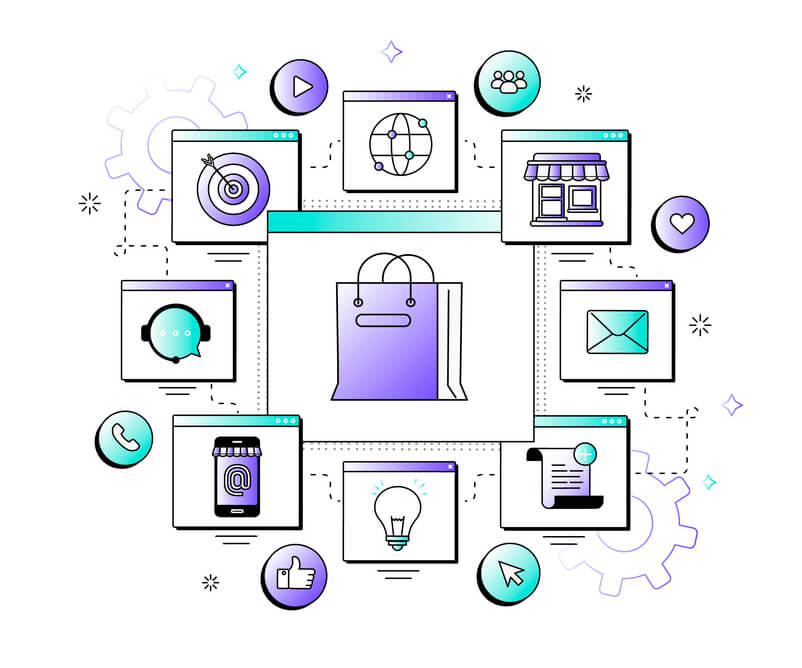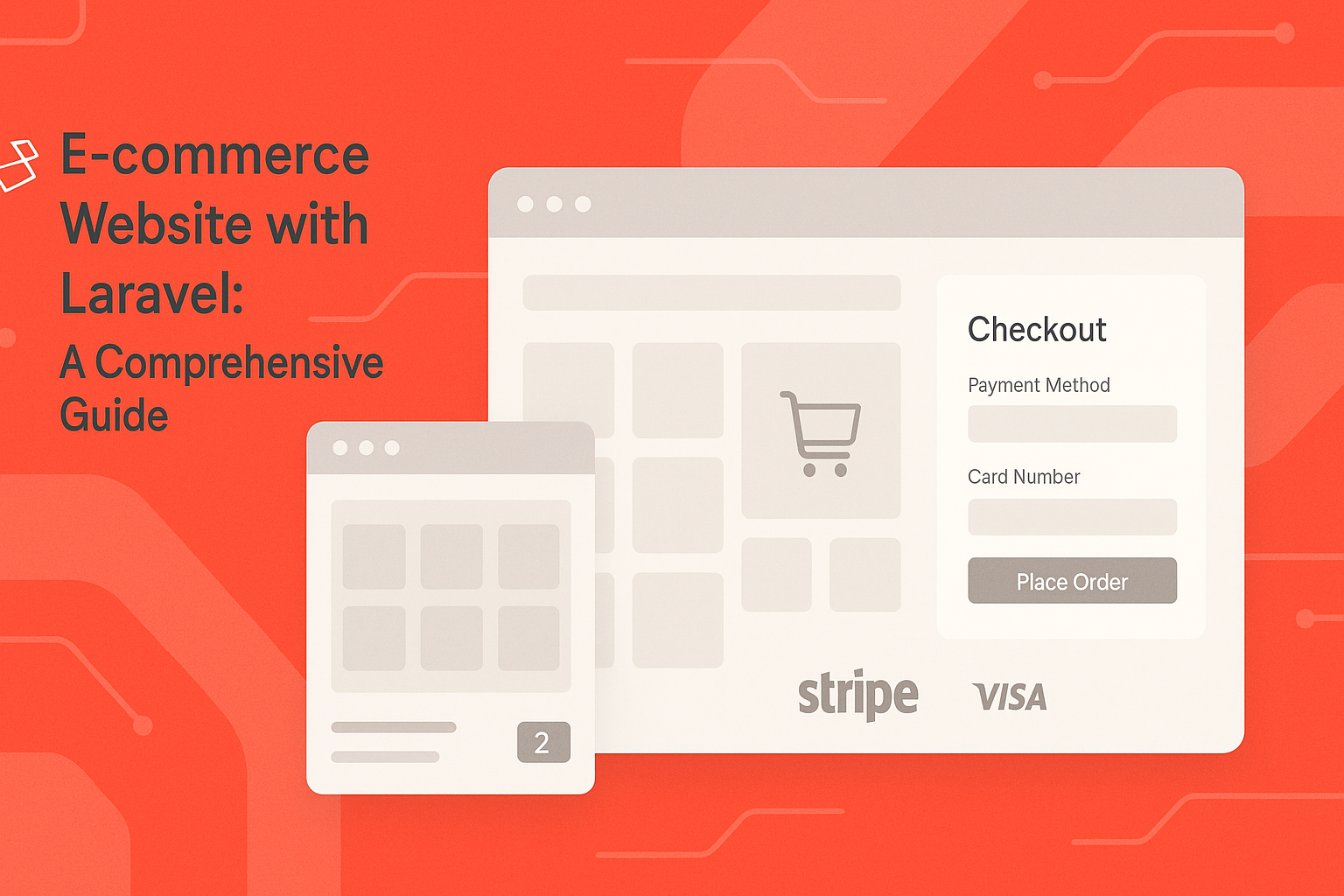E-commerce Development: Building Online Stores
With the digital marketplace continually expanding, developing an e-commerce website has become a necessity for businesses aiming to tap into the lucrative world of online sales. This article provides a detailed guide on how to develop an e-commerce website, offering valuable insights that can help you create an effective online shopping experience for your customers.
Conceptualize: The First Step in Developing an E-commerce Website
Before you start to develop an e-commerce website, it's essential to have a clear idea of what you want to achieve. Understand your target audience, identify the products or services you'll offer, and outline the unique selling points that set you apart from your competition. This initial planning stage sets the foundation for the development process and guides your decisions moving forward.
Choose Your Platform: The Backbone of Your E-commerce Website
Selecting the right platform is crucial when you're figuring out how to develop an e-commerce website. Various platforms offer different capabilities, and your choice should align with your business needs. Some popular options include Shopify, WooCommerce, Magento, and BigCommerce. Each platform comes with its own set of advantages and considerations, so research thoroughly to find the best fit for your business.
Design Your Store: The Aesthetics of E-commerce Website Development
The design of your e-commerce website should be visually appealing while maintaining functionality and ease of navigation. A well-designed website can significantly enhance user experience, increasing the likelihood of visitors becoming customers. Remember to ensure your website is mobile-friendly, as a significant portion of online shopping occurs on mobile devices.
Add Your Products: The Heart of E-commerce Website Development
Adding your products is a pivotal step in developing an e-commerce website. Ensure each product has a clear, descriptive title, a comprehensive description, and high-quality images. Depending on the nature of your products, you may also need to include information such as sizes, colors, and materials.
Integrate Payment and Shipping Methods: The Logistics of E-commerce Development
An e-commerce website must offer secure, reliable payment options that cater to various customer preferences. Popular options include credit/debit card processing, PayPal, and other mobile payment platforms. You also need to set up your shipping methods, considering factors like shipping costs, delivery times, and international shipping options.
Test and Launch: Final Steps in Developing an E-commerce Website
Before launching, conduct thorough testing to ensure all aspects of your site work seamlessly. This includes testing your site's performance, its load times, and the checkout process. Once you're confident your website is ready, it's time to launch.
In conclusion, learning how to develop e-commerce websites requires a clear understanding of your business goals, target audience, and market trends. With careful planning, the right platform, and a user-centric design, you can create an e-commerce website that not only attracts visitors but also converts them into loyal customers.
Laravel for E-commerce: From Packages to Headless Architecture
For most companies, a website is no longer just an online office or a digital showcase—it is part of the core business process, especially for online stores, marketplaces, and service-based platforms. Ready-made solutions like Shopify, WooCommerce, or Magento are excellent for quick launches, but they often reach their limits once a business needs custom order processing, multi-warehouse inventory management, or unique pricing rules tailored to specific requirements.
This is where Laravel shines. As a robust PHP framework, it combines structure with freedom: you can keep the codebase clean, extend functionality with community packages, or build fully custom features from scratch. In this article, we explore how Laravel supports flexible e-commerce solutions, with practical notes on architecture, recommended packages, and deployment practices.
Why Choose Laravel for E-commerce?
Laravel provides the flexibility to build custom features while leveraging an ecosystem of thousands of community packages. This balance makes it a strong foundation for e-commerce platforms, offering more freedom and scalability than most popular CMS solutions.
- Open-Source Advantage—Full control over the codebase enables deep customization and continuous innovation.
- Scalability—Adapts to growing business needs, from higher traffic to larger product catalogs and complex workflows.
- Security—Built-in protection against CSRF, SQL injection, and XSS helps safeguard sensitive customer data.
- MVC Architecture—A clean, organized structure that speeds up development, simplifies maintenance, and improves collaboration.
- Extensive Ecosystem—Thousands of community packages accelerate delivery, lower costs, and prevent reinventing the wheel.
- Flexible Storefronts (Headless Approach)—Decouples the frontend from the backend so one system can power multiple storefronts—from websites to mobile apps—with greater flexibility, security, and performance.
- API-First Approach—Makes it straightforward to build APIs for seamless integration with storefronts, mobile apps, and third-party services.
Headless E-commerce with Laravel
A headless e-commerce architecture separates the customer-facing frontend from the backend business logic and data handling, providing significant benefits:
- Flexibility—Choose modern frontend technologies like Vue.js, React, or Angular to craft tailored user experiences.
- Performance—Faster page loads and improved responsiveness lead to higher customer satisfaction.
- Omnichannel Presence—Deliver consistent shopping experiences across web, mobile apps, and even IoT devices.
- Enhanced Security—Isolating backend logic from the presentation layer reduces the overall attack surface.
Laravel-based packages such as LunarPHP facilitate headless commerce with a robust RESTful JSON:API and an intuitive Livewire-powered admin panel.
Popular Laravel E-commerce Packages
Selecting the right Laravel package can significantly speed up development and ensure essential capabilities are covered. Here’s a quick overview:
- Bagisto—Open-source platform supporting marketplaces, multi-store setups, PWAs, and B2B commerce.
- Lunar—Ideal for headless solutions with clean architecture, JSON:API, and robust management capabilities.
- Aimeos—High-performance, API-first solution suitable for large-scale e-commerce, marketplaces, and B2B scenarios.
- Vanilo—A streamlined framework emphasizing Laravel’s simplicity for quick, efficient projects.
- AvoRed—Modular, customizable shopping cart for tailored functionality.
- Laravel Shopping Cart—Straightforward package for basic cart implementations.
- Cashier—Integrates subscription billing with Stripe or Paddle.
- Laravel PayPal—Provides seamless PayPal payment integration.
Laravel vs. Ready-made CMS: Comparison
| Feature | Laravel E-commerce Packages | Ready-made CMS (Shopify, WooCommerce, Magento) |
|---|---|---|
| Customization | High; complete code control | Limited by themes/plugins |
| Scalability | Highly scalable | Varies based on CMS |
| Security | Requires careful implementation | Managed by CMS; frequent updates |
| Development Time | Longer; coding expertise required | Shorter; quick setup and out-of-the-box functionality |
| Cost | Potentially lower in the long term | Subscription/transaction fees accumulate |
| Technical Skill | Requires skilled Laravel developers | Manageable with less technical knowledge |
Final Thoughts
Laravel offers a flexible, future-proof foundation for e-commerce. By combining clean architecture, a rich package ecosystem, and support for modern patterns like headless commerce, it enables secure, scalable, and fully tailored solutions. Whether you are starting with a simple store or building a complex multi-channel platform, Laravel provides the tools and ecosystem to bring that vision to life—without being boxed in by the limits of ready-made platforms.
“Ready-made platforms limit growth. Laravel opens the door to tailor-made e-commerce that scales with your business.”
🚀 Build Your Next E-commerce with Laravel
Thinking about building or scaling your e-commerce platform? At DigiSpace, we help businesses design tailored Laravel solutions—from architecture and package selection to deployment and optimization.
Contact Us Today

